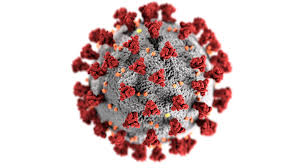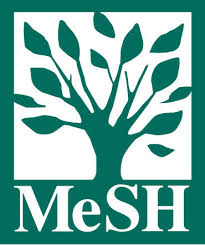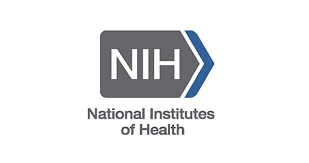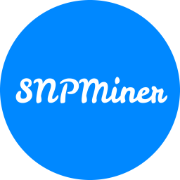Developed by Shray Alag, The Harker School
Sections: Correlations,
Clinical Trials, and HPO
Navigate: Clinical Trials and HPO
| Name (Synonyms) | Correlation | |
|---|---|---|
| drug4667 | pre_lunch Yoga-based breathing support Wiki | 0.50 |
| drug4589 | morning Yoga-based breathing support Wiki | 0.50 |
| drug3905 | Tap water Wiki | 0.50 |
| Name (Synonyms) | Correlation | |
|---|---|---|
| drug4666 | pre_dinner Yoga-based breathing support Wiki | 0.50 |
| drug3051 | Povidone-iodine Wiki | 0.50 |
| drug2034 | Ivermectin 3mg Tab Wiki | 0.50 |
| drug1422 | Essential oils Wiki | 0.50 |
| drug1807 | Hydroxychloroquine Sulfate Tablets Wiki | 0.35 |
| drug2620 | Normal saline Wiki | 0.20 |
| drug1127 | DAS181 Wiki | 0.20 |
| drug4335 | Zinc Wiki | 0.18 |
| drug4249 | Vitamin C Wiki | 0.13 |
| drug1511 | Favipiravir Wiki | 0.10 |
| drug421 | Azithromycin Wiki | 0.08 |
| drug2916 | Placebo Wiki | 0.04 |
Navigate: Correlations HPO
There are 4 clinical trials
The SARS-CoV-2 coronavirus pandemic is responsible for more than 180,000 deaths worldwide and 20,000 deaths in France. To date, no treatment or vaccine has been successful. Povidone-iodine is an antiseptic suitable for use on the skin and mucosa with potent virucidal activity, particularly against coronaviruses. It is marketed for oro-nasopharyngeal decolonization. 24 patients with positive nasopharyngeal SARS-CoV-2 carriage will be randomized (1:1) in an experimental group (benefiting from povidone iodine decolonization) or a control group. Patients in the experimental group will be asked to gargle with a 1% povidone-iodine solution, spray their nose with the same antiseptic solution, and finally applied 10% povidone-iodine cream in each nostril, all four times a day for five days. Patients will be followed for 7 days to evaluate the efficacy and safety of povidone iodine decolonization.
COVID-19 is highly infectious and transmission of the virus is thought to be similar to that of influenza which can be transferred through droplets released when a person coughs, sneezes or talks. Studies have shown that nasal rinsing and mouth washes may be an important way to deliver treatments that could reduce the amount of a virus that is present in the nose and mouth. This also could mean that there is less virus available to pass on to others. We want to see if the use of nose rinses and mouth washes using Povidone-Iodine will reduce the the amount of virus in the nose and throat of people who have tested positive for COVID-19 disease and also reduce the spread of infection within their household.
Description: viral load as measured by real time polymerase chain reaction (PCR)
Measure: Change in viral load in the oral and nasopharyngeal cavity Time: Day 0, 2, 3, 7, 14Description: Visual analogue score 1-5 per symptom via a smartphone app
Measure: Symptom severity in primary participants and co-residents Time: Days 0 to 14The purpose of this study is to assess the ability of regular gargling to eliminate severe acute respiratory syndrome coronavirus 2 (SARS-CoV-2) in the throat and nasopharynx. This 4 arms interventional study compares the effect of gargling using povidone-iodine, essential oils- based, tap water with control (no intervention) among Stage 1 coronavirus disease-2019 (COVID-19) patients. Findings from this study will provide new insight into the importance of gargling in the treatment and prevention of COVID-19.
Description: Viral clearance is defined as two negative RT-PCR (of swabs from oropharynx and nasopharynx) results at least 24 hours apart
Measure: Number of Participants With Early Viral Clearance Time: Day 6Description: RT-PCR (swabs from oropharynx and nasopharynx) taken at day 12
Measure: Number of Participants With Negative RT-PCR Results Time: Day 12Description: Presence of signs and symptoms of more severe COVID19 Based symptoms diary and clinical evaluation
Measure: Number of Patients That Progress to More Severe Disease Time: Day 12Description: abnormal chest x-ray or CT scan
Measure: Number of Patients With Abnormal Radiological Findings Time: Day 0-14Description: Abnormal absolute lymphocytic count Abnormal C-reactive protein
Measure: Number of Patients With Abnormal Laboratory Findings Time: Day 0-14In December 2019, a novel coronavirus, now called COVID-19, emerged as a global health threat from Wuhan, China. Within weeks, the contagious virus spread within and between communities, causing a lower respiratory tract infection dominated by symptoms of fever, cough and sore throat. The incubation period was estimated at between 5 to 7 days, but could last as long as 14 days. Although COVID-19 causes a mostly mild and self-limiting disease, respiratory involvement has been reported in about 5% of the population, requiring supplemental oxygen and even ventilatory support to relieve hypoxia. Alveolar damage, fibrosis and consolidation have been reported in radiologic and post-mortem studies. Existing data suggest a mortality rate of COVID-19 is approximately 1-2%, higher among individuals with pre-existing comorbidities and in healthcare systems with suboptimal access to ventilatory support. Given its high transmissibility, COVID-19 has quickly spread across the globe within a short interval. By 27 April 2020, over 3 million people around the world have been diagnosed with COVID-19, and more 200,000 have succumbed to the disease. As a proportion of patients manifest mild or no symptoms, these numbers are likely an underestimate of the actual number of patients with COVID-19. More disconcertingly, patients are known to shed viruses despite mild or no symptoms, making it essential that a collective approach against COVID-19 incorporate active pharmacological treatment to prevent or mitigate virus pathogenesis prior to its potential evolution to cause respiratory distress. To date, clinical trials have focused on the treatment of hospitalised patients diagnosed with COVID-19; only few have examined the clinical benefits of pharmacological agents despite few compelling in vitro data. The relatively high transmission of COVID-19 in a closed dormitory environment of migrant workers in Singapore presents a real-life scenario where a prophylaxis treatment could reduce the impact of the disease. In Singapore, there are well grounded concerns an excess in cases could pose the possibility of strain in healthcare system and mentally drain her workers. The availability of an effective prophylaxis treatment is highly desirable to potentially reduce this burden. Data from the current study could also have implications on how future outbreaks in high-density areas should be managed, especially when residents are subjected to quarantine and isolation.
Description: Acute respiratory illness is defined by acute onset with any key respiratory symptoms including cough, shortness of breath, sore throat, runny nose and change in smell.
Measure: Acute respiratory illness in treatment arms (hydroxychloroquine, ivermectin, zinc and povidone iodine) Time: At the end of study dosing, which is day 42Alphabetical listing of all HPO terms. Navigate: Correlations Clinical Trials





Data processed on September 26, 2020.
An HTML report was created for each of the unique drugs, MeSH, and HPO terms associated with COVID-19 clinical trials. Each report contains a list of either the drug, the MeSH terms, or the HPO terms. All of the terms in a category are displayed on the left-hand side of the report to enable easy navigation, and the reports contain a list of correlated drugs, MeSH, and HPO terms. Further, all reports contain the details of the clinical trials in which the term is referenced. Every clinical trial report shows the mapped HPO and MeSH terms, which are also hyperlinked. Related HPO terms, with their associated genes, protein mutations, and SNPs are also referenced in the report.
Drug Reports MeSH Reports HPO Reports